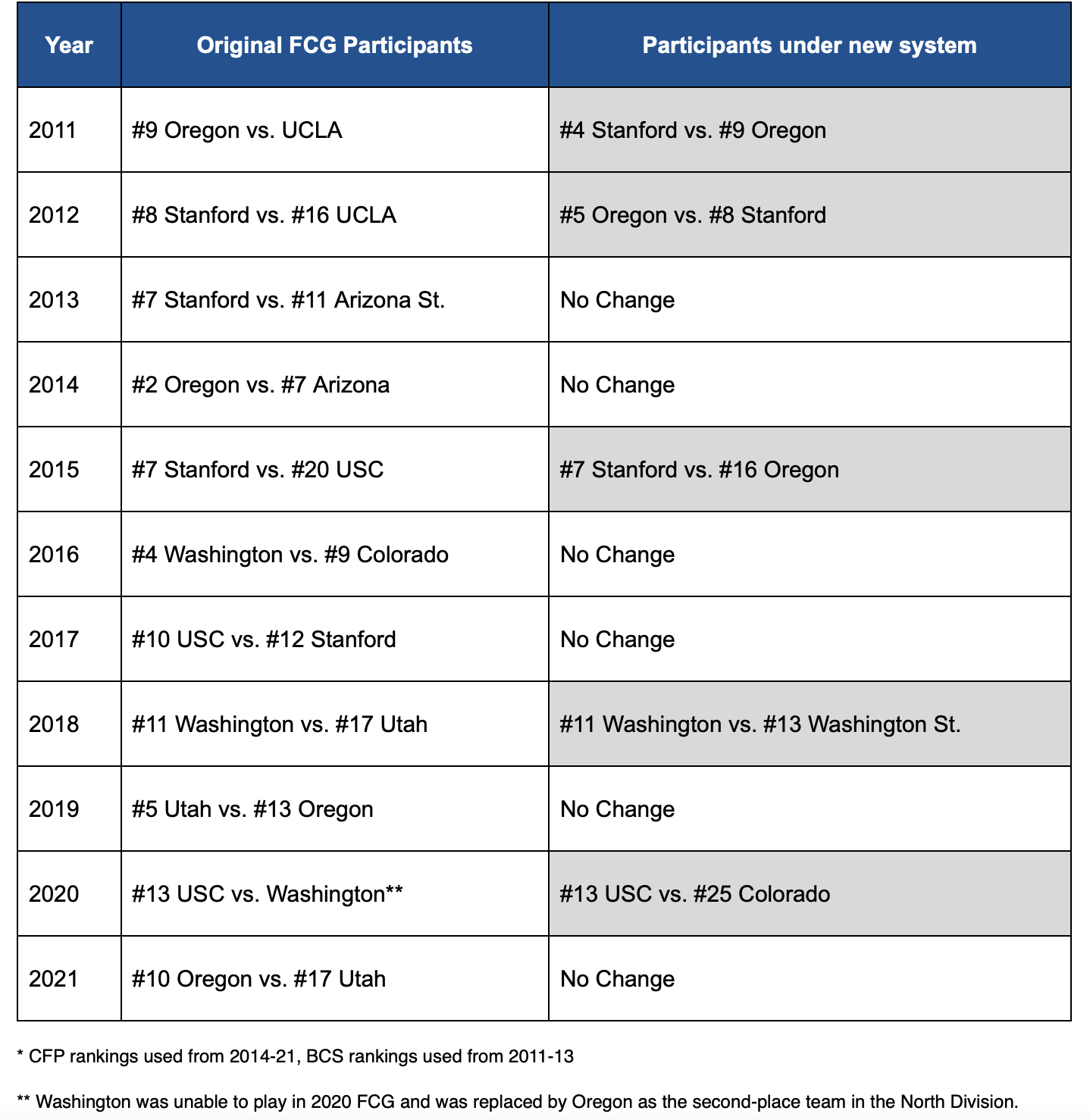© 2025 ALLCITY Network Inc.
All rights reserved.

BOULDER — Back in July, when Pac-12 commissioner George Kliavkoff held his introductory press conference in Los Angeles, he laid out his primary objectives.
“I want to be 100% clear: Going forward, the Pac-12 conference will make all of our football-related decisions with the combined goals of optimizing CFP invitations and winning national championships,” he said. “This is a decision fully supported by all 12 of our athletic directors.”
On Wednesday, the conference announced its first major change to give the Pac-12 a better chance to reach the College Football Playoff.
The Pac-12 Championship Game has been played between the winners of the two divisions (the North and the South) since 2011. Now, though, the game will be played between the two teams with the best conference record, regardless of which division they come from. The change goes into effect immediately.
Pac-12 head coaches, athletic directors and board of directors voted unanimously to make this change, and they were surprisingly prepared to do so. Up until Wednesday morning, conferences with at least 12 teams were required to split into divisions and have the winners play in the championship game. That requirement was removed by the Division I Council around noon on Wednesday and the Pac-12’s press release announcing the change was spread just a few minutes later. The change had initially been proposed by the Pac-12.
In the press release, Kliavkoff echoed his statement from July.
“Our goal is to place our two best teams in our Pac-12 Football Championship Game, which we believe will provide our conference with the best opportunity to optimize CFP invitations and ultimately win national championships,” Pac-12 Commissioner George Kliavkoff said in a press release. “Today’s decision is an important step towards that goal and immediately increases both fan interest in, and the media value of, our Football Championship Game.”
The change in format will bolster the conference’s CFP chances by giving the higher ranked team the opportunity to win a tougher game and move up in the rankings. This is a double-edged sword because a tougher opponent also means a win is less likely, but it’s a necessary risk given the state of the conference.
The goal for the conference is to get a team into the top-four in the CFP Rankings and have a chance to compete for the national title. In the 11 seasons of the conference’s 12-team era, only two teams have entered the championship game while being ranked in the top four in the country. Every other championship contender was trying to fight their way upward in the standings.

If the Pac-12 would’ve used the new format for the past 11 seasons, five championship contenders would have been replaced. All five of the new teams were ranked higher than the team that actually played in the game, and the history of the Pac-12 could be very different.
When #9 Oregon beat unranked UCLA in the 2011 Pac-12 Championship, the Ducks jumped up to #5 in the rankings. Under the new rules, #4 Stanford would have taken UCLA’s place. If beating an unranked team bumped the Ducks into the top five, beating Stanford probably would’ve gotten them into the top four. And if Stanford won, the Cardinal would have stayed in the top four. (College football was still three years away from the College Football Playoff, so the top four was much less important then. But the goal moving forward is finishing in the top four so we’re looking at everything through that lens.)
In 2015, #7 Stanford beat #20 USC to get to #6 in the country. Beating #16 Oregon instead probably wouldn’t get the Cardinal into the top four, but the odds would have been slightly better.
In 2012, #8 Stanford was able to get into the top four by beating #16 UCLA. But the conference could have virtually guaranteed a top four finish if the #8 Cardinal played the #5 Ducks instead.
In the past five seasons, the Pac-12’s champion has been ranked #8, #9, #6, #25 and #11. One of the problems is that the higher-seeded team has lost the past three conference championship games, after it won the first eight. If #5 Utah hadn’t lost to #13 Oregon in 2019 to start this streak, the Pac-12 may have gotten the Utes into the playoff.
But the point is still that the tweaked championship game format wouldn’t have been the difference in recent years. The bottom line is that its teams need to win more out of conference games in general and its top teams need to play clean ball throughout the conference season. Better football leads to better results.
Still, this tweak increases the conference’s chances on the margins and it’s only the start. Doing away with divisions altogether is probably on the docket in the next couple of years. Moving from a nine-game conference schedule to an eight-game schedule will happen at some point, but the move will probably be synchronized with the beginning of the scheduling alliance with the Big Ten and the ACC.
It’s up to the conference to maximize its teams chances, but it’s up to the teams to fight their way into the top four.
Comments
Share your thoughts
Join the conversation



